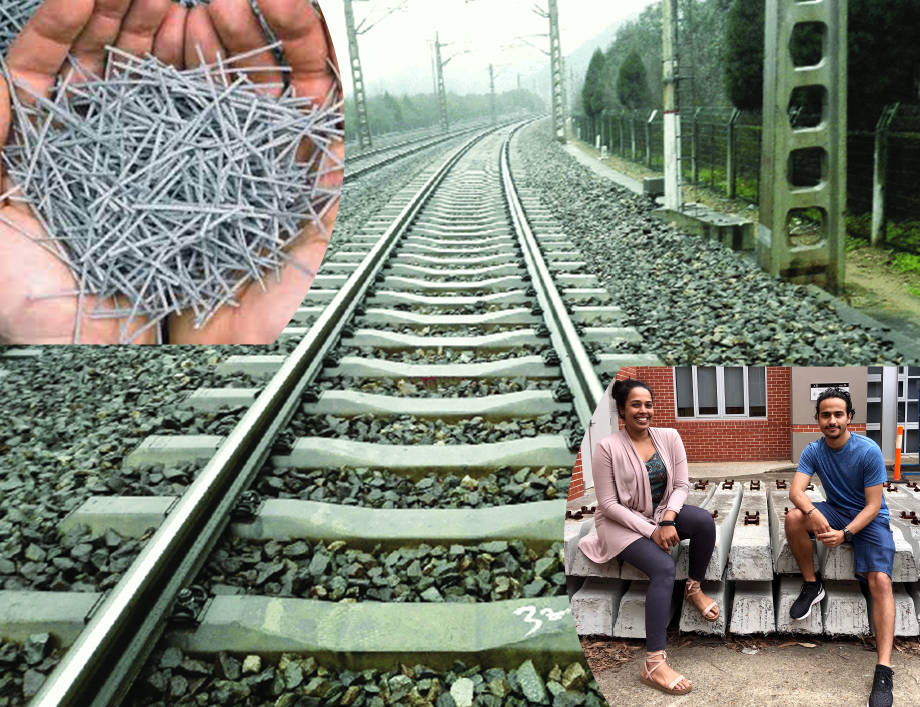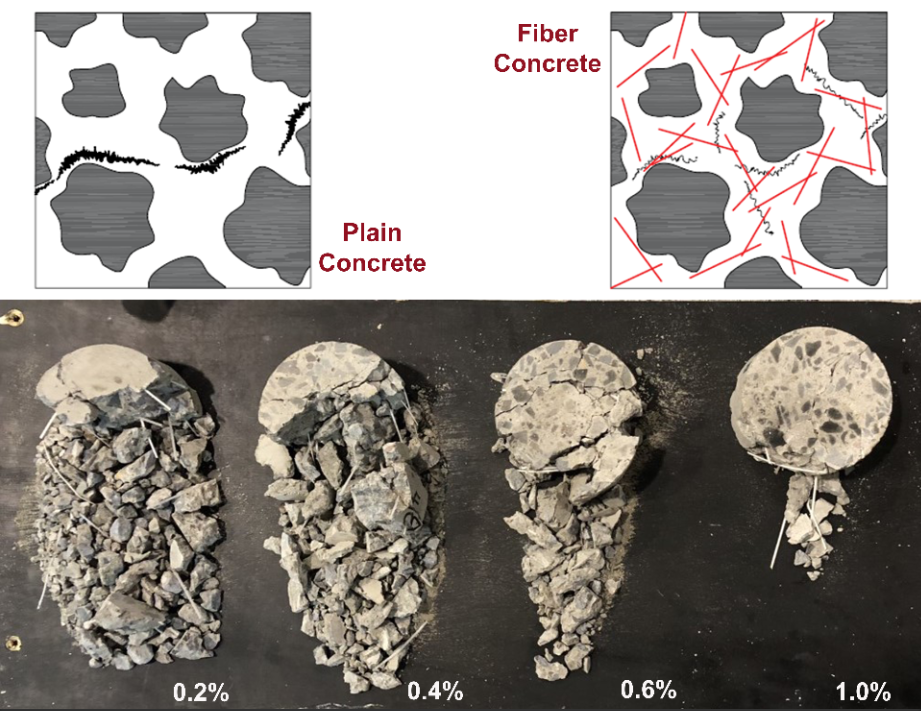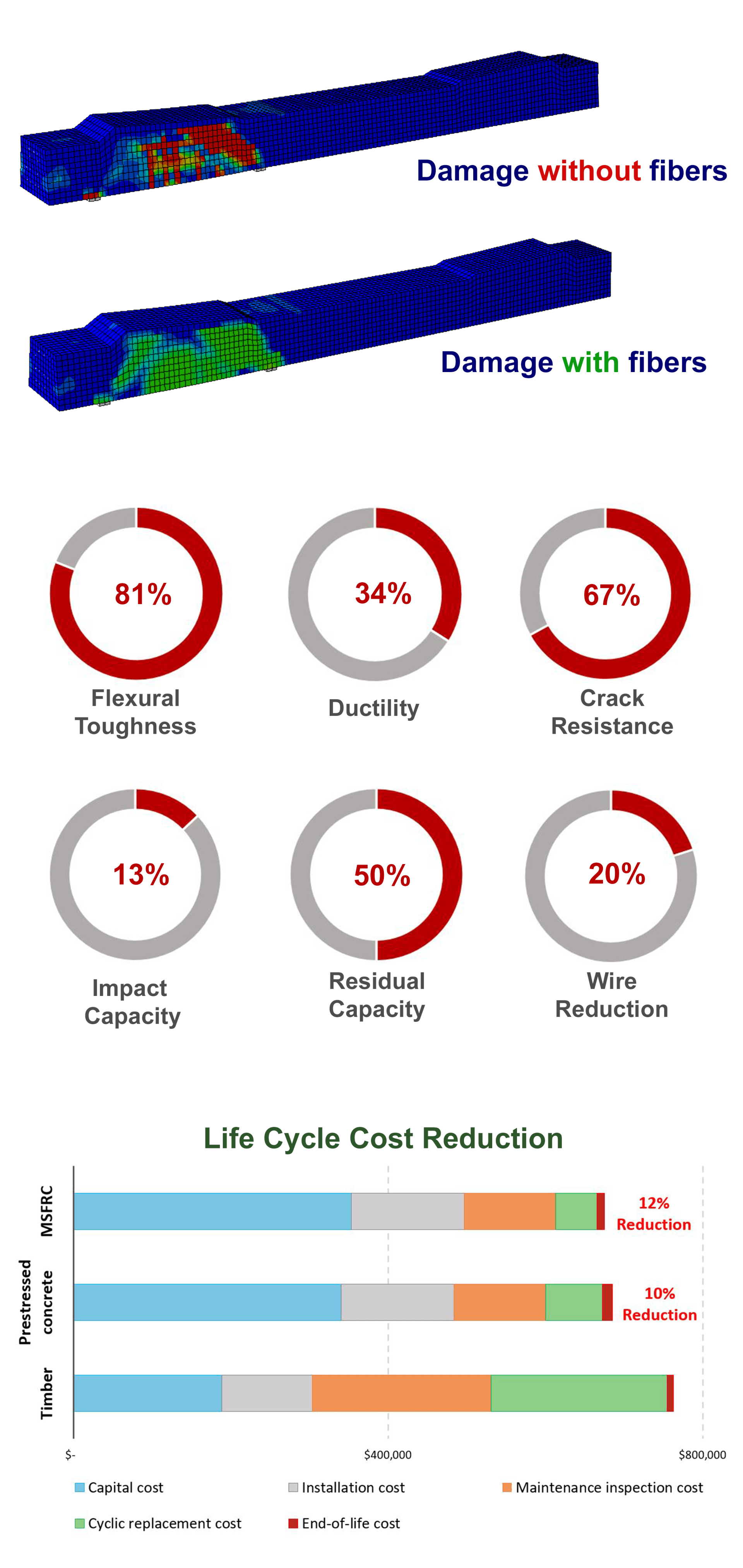Dayani Kahagala Hewage
Dayani is a doctoral candidate in her final year, with research interests in the impact behaviour of structures and fibre-reinforced concrete. She has diversified experience in structural engineering, green-building consultancy and lecturing. She is passionate about carbon-neutral city development and inspiring women in STEM.
Railway sleepers are among the most essential component within the track infrastructure (Image 1) that safely distribute the traffic loads (i.e. static & dynamic) to the beneath ballast layers.
In Australia, the sleepers are commonly made from prestressed concrete that offers superior strength and durability performances. However, concerns about the prestressed concrete materials have long been acknowledged because of the more frequent and heavier axle loads travelling at increased speeds. As a result, the conventional sleepers often experience degradation, premature cracking and failure that incur considerable maintenance and replacement costs, representing around 25% of the Australian railway industry budget. To that end, this project optimised the existing prestressed concrete design and provided a cost-effective reinforcement alternative to prestressing wires through macro synthetic fibre technology.
Typically, the use of high-performance structural BarChip fibres (i.e. polypropylene) provides encouraging benefits for sustainable concrete applications that require increased toughness and ductility while also having durability concerns due to corrosion. Through the use of an optimised mix design and fibre dosage, the macro synthetic fibre reinforced concrete (MSFRC) developed considerable crack-bridging interactions (Image 2) that resulted in improved residual capacity, crack resistance, toughness and overall ductility of the material performances.
In order to validate the structural behaviour, the project experimentally and numerically assessed the MSFRC sleeper when subjected to critical static and dynamic loading conditions. Accordingly, the experimental, numerical and analytical results were in good agreement and further permitted a partial reduction in the number of prestressing steel wires with minimal structural capacity reduction.
In addition, the long-term financial benefits of macro synthetic fibre reinforcement in sleepers are acknowledged using a life cycle costing approach (Image 3) despite the relatively high investment costs. Therefore, the innovative MSFRC sleeper represents a feasible design that delivers adequate structural capacity through a more sustainable reinforcement system, potentially providing a cost-efficient alternative for the railway industry.



